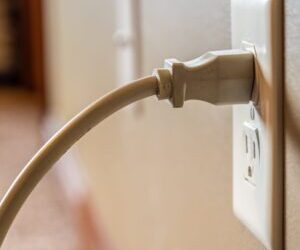Winter comes with the risk of freezing pipes, which can cause extensive damage in your home. You can avoid costly repair bills by following some simple tips to prevent this relatively common problem. Both outside and inside of your home, here’s what you can do to protect your biggest investment.
Turn Off Your Irrigation System
Winterizing your irrigation system will keep it protected during the colder months.
If your system is automatic, start by shutting it down or resetting any active timers. Most modern systems have a ‘rain’ or ‘off’ mode that will shut off the water supply to pipes. If any of your control units are outside, wrap them in specialist water meter insulation. You can buy insulation from your local hardware store.
If you have an older system without a shutoff control, consider having a master valve installed. This will allow you to fully cut the flow to your irrigation. This is also useful any time that you will be going on vacation or leaving home for an extended period.
Drain Your Irrigation
Shutting the system down will prevent water entering the pipes. However, you’ll still have to take care of residual liquid in the pipes. Open your drain valve for a day until water is fully purged from the system. Some water could remain in the pipes and expand if frozen, so you could use the compressed air blowout method to fully clear your irrigation.
A professional irrigation or landscaping team will be able to perform a blowout before next winter.
Some systems feature advanced auto draining systems, eliminating the need for professional service. Consult your user manual before performing any work on your irrigation.
Insulate Pipes in Your Home
Pipes in areas of your home with minimal insulation should be wrapped in foam pipe covers. Basement, garage, and exposed outdoor pipes should all be insulated. Foam covers are affordable and extremely easy to install. They come pre-slit and can be pressed on to the pipe with very little effort.
Pipes under kitchen sinks and in bathrooms typically won’t need any insulation. If you keep your home warm during the winter, then you can leave these pipes as they are.
Try to keep interior doors open so that warm air can circulate throughout your home, further reducing the risk of freezing pipes.
Use a Heating Cable
Heating cables are another option and are more effective than insulation. They are compatible with rigid plastic and metal pipes, and don’t need professional installation.
Heating cable should be taped to exposed pipes and then covered with an insulating wrap. You’ll only need to turn on a cable during the coldest days of winter or during a cold snap.
Heating cables use minimal electricity and could potentially save you thousands on repairs for frozen pipes.
Fill in Cracks and Holes Around Pipes
Seal any cracks, holes, and gaps around pipes that come through walls and floors. This will prevent air movement and will go a long way towards preventing freezing pipes. Caulking works, but you’ll get even better results from spray foam insulation.
For pipes that come through floors, seal around both the interior and underneath in the crawl space. In addition to preventing pipe freeze, this also helps to keep your home well insulated and energy efficient.
Extra Tips to Prevent Freezing Pipes
- Don’t forget to insulate pipes running to dishwashers and other appliances.
- Leave a faucet dripping if you’ve had problems with a particular pipe in the past.
- Open cabinet doors on the coldest days to allow warm household air to circulate.
- Pipes most in need of insulation are those closest to walls and unheated spaces.
Protect your home next winter by following this basic advice. A little planning can protect the investment you’ve made in your home, keeping your pipes clear and flowing freely throughout the winter.



0 Comments